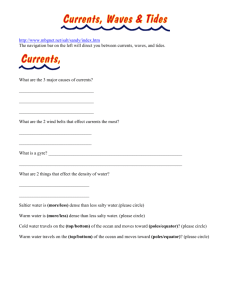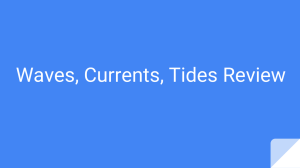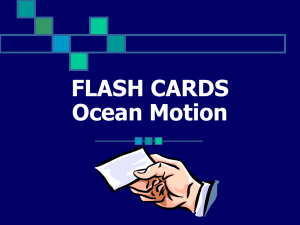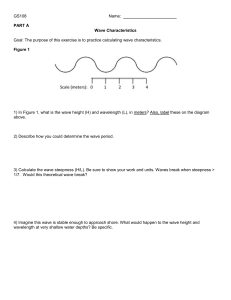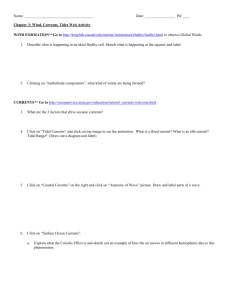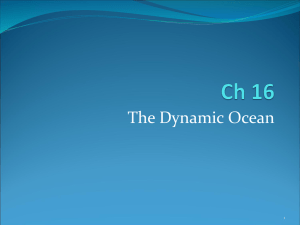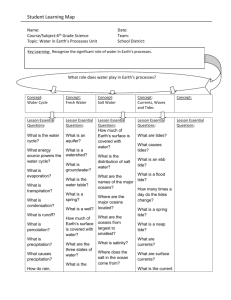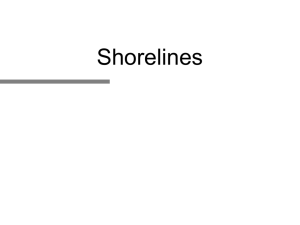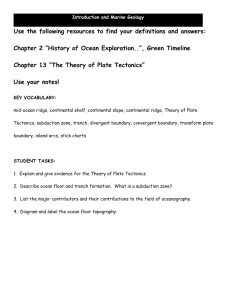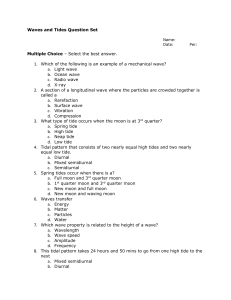Review
advertisement
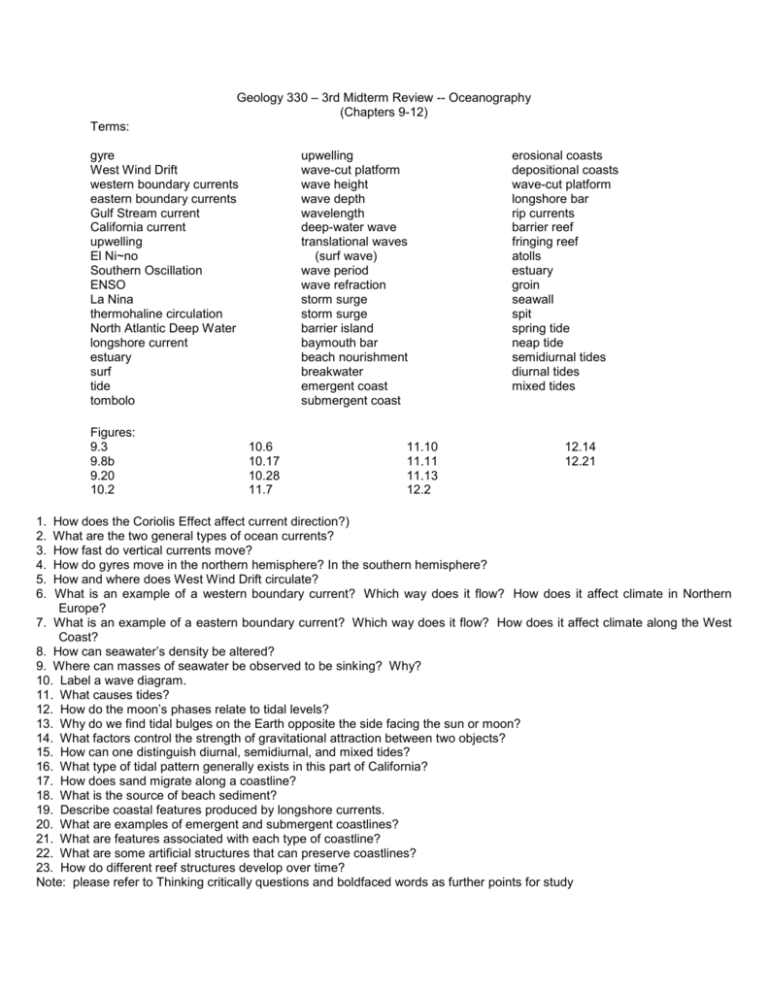
Geology 330 – 3rd Midterm Review -- Oceanography (Chapters 9-12) Terms: gyre West Wind Drift western boundary currents eastern boundary currents Gulf Stream current California current upwelling El Ni~no Southern Oscillation ENSO La Nina thermohaline circulation North Atlantic Deep Water longshore current estuary surf tide tombolo Figures: 9.3 9.8b 9.20 10.2 1. 2. 3. 4. 5. 6. upwelling wave-cut platform wave height wave depth wavelength deep-water wave translational waves (surf wave) wave period wave refraction storm surge storm surge barrier island baymouth bar beach nourishment breakwater emergent coast submergent coast 10.6 10.17 10.28 11.7 11.10 11.11 11.13 12.2 erosional coasts depositional coasts wave-cut platform longshore bar rip currents barrier reef fringing reef atolls estuary groin seawall spit spring tide neap tide semidiurnal tides diurnal tides mixed tides 12.14 12.21 How does the Coriolis Effect affect current direction?) What are the two general types of ocean currents? How fast do vertical currents move? How do gyres move in the northern hemisphere? In the southern hemisphere? How and where does West Wind Drift circulate? What is an example of a western boundary current? Which way does it flow? How does it affect climate in Northern Europe? 7. What is an example of a eastern boundary current? Which way does it flow? How does it affect climate along the West Coast? 8. How can seawater’s density be altered? 9. Where can masses of seawater be observed to be sinking? Why? 10. Label a wave diagram. 11. What causes tides? 12. How do the moon’s phases relate to tidal levels? 13. Why do we find tidal bulges on the Earth opposite the side facing the sun or moon? 14. What factors control the strength of gravitational attraction between two objects? 15. How can one distinguish diurnal, semidiurnal, and mixed tides? 16. What type of tidal pattern generally exists in this part of California? 17. How does sand migrate along a coastline? 18. What is the source of beach sediment? 19. Describe coastal features produced by longshore currents. 20. What are examples of emergent and submergent coastlines? 21. What are features associated with each type of coastline? 22. What are some artificial structures that can preserve coastlines? 23. How do different reef structures develop over time? Note: please refer to Thinking critically questions and boldfaced words as further points for study
